Kodak 35mm film delivers warmth and love to 'Chambre 212'
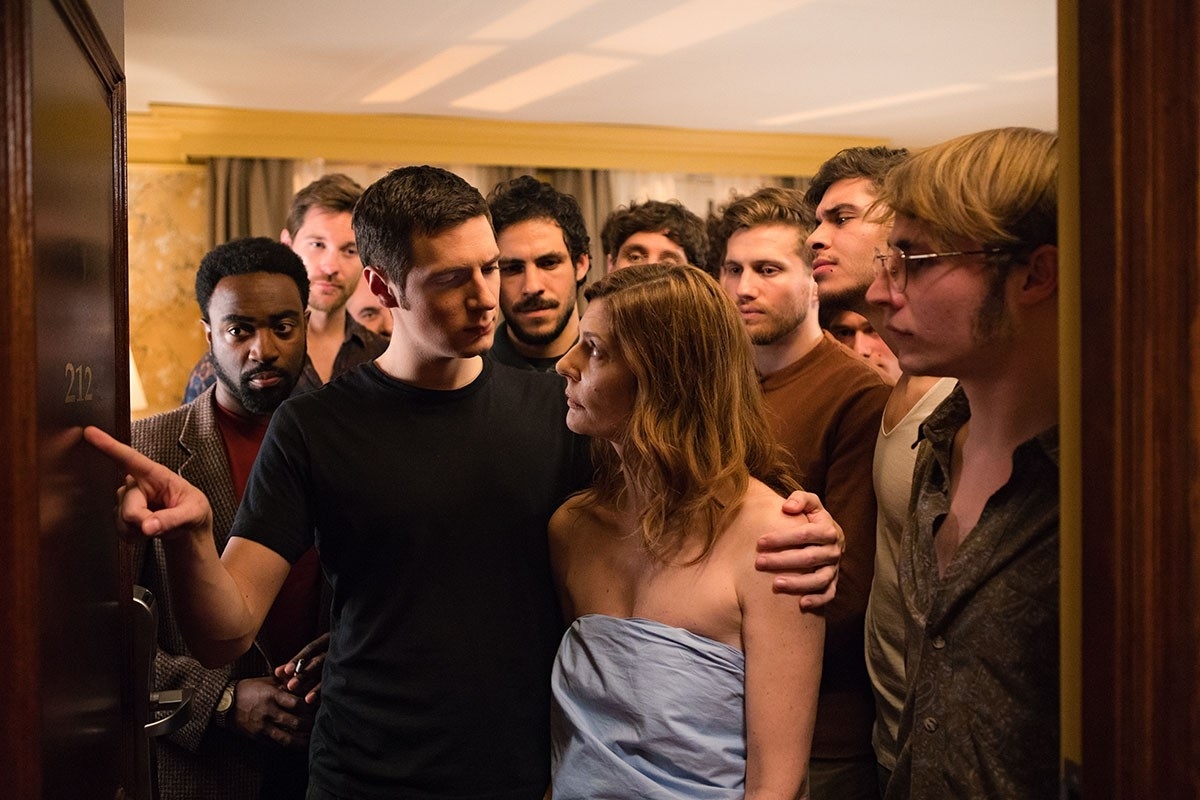
A shot from Christophe Honoré’s romantic comedy "Chambre 212." © Jean-Louis Fernandez.
Captured on Kodak 35mm, Christophe Honoré’s romantic comedy Chambre 212 (On a Magical Night) takes its title and inspiration from Article 212 of the French Civil Code, which states that “spouses owe each other respect, fidelity, moral and financial support, and assistance.”
The story follows Maria (Chiara Mastroianni), who after 20 years of marriage, decides to leave her husband when suddenly he suspects her of infidelity. She moves into Room 212 at the hotel across the street, with a bird’s-eye view of her apartment, her husband and the life she shared with him.
While she wonders if she made the right decision, many of the people in her life, both past and present, offer their opinions on the matter. They intend to let her know their feelings, whether she likes it or not, on what proves to be a life-changing evening.
Chambre 212 is the sixth collaboration between director Honoré and French cinematographer Rémy Chevrin AFC. All of their previous collaborations have also been shot on film, including an early 16mm TV drama, and the 35mm features Seventeen Times Cecile Cassard (2002), Les Chansons d'Amour (2007), the César-nominated Beloved (2011), plus Sorry Angel (2018), which screened In-Competition at the 2018 Cannes Film Festival. Mastroianni won the Best Performance Award when Chambre 212 premiered in the Un Certain Regard section at the 2019 Cannes Film Festival.
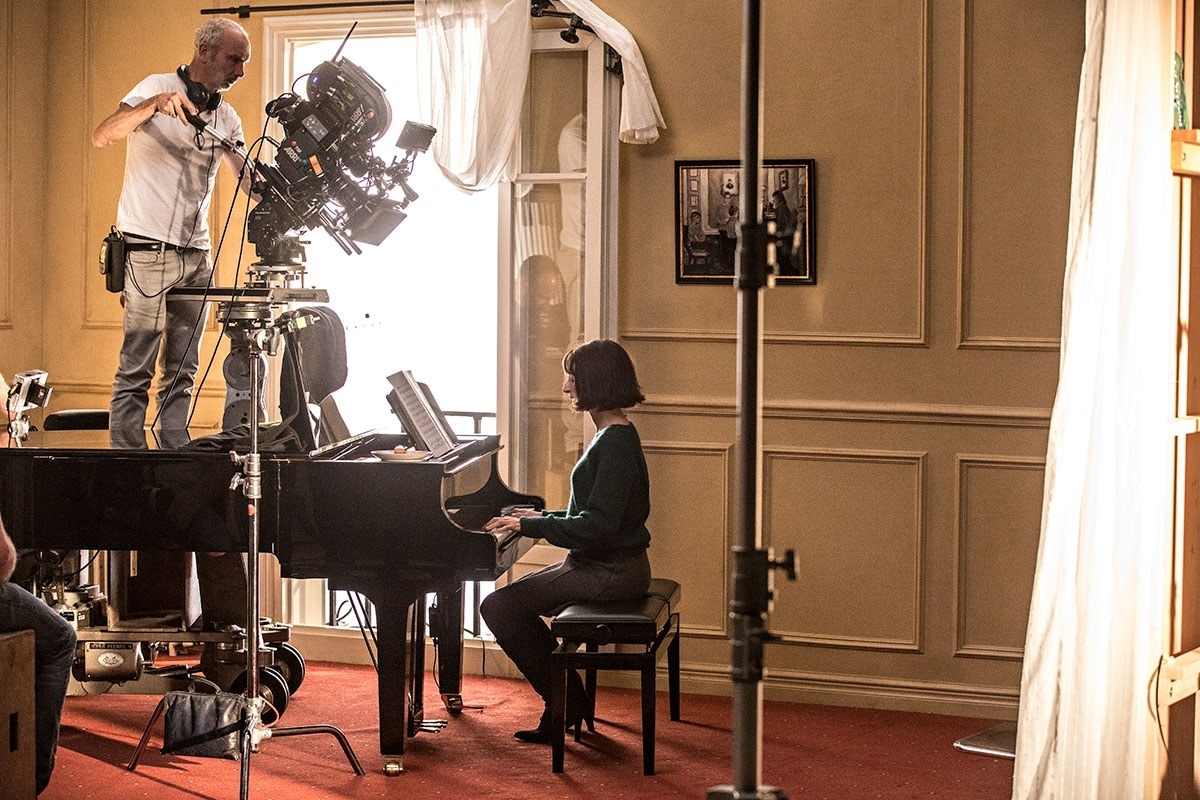
DP Rémy Chevrin AFC filming on 35mm for Christophe Honoré’s "Chambre 212." © Jean-Louis Fernandez.
“Christophe and I are, quite simply, in love with 35mm film and the holy moments of the chemical process that deliver such great results,” says Chevrin. “I will never lose or abandon film, because it always supports and serves the director and cinematographer so well in telling a story.”
Chambre 212 is a co-production between Bidibul Productions in Luxembourg, France 2 Cinema, France, and Scope Pictures in Belgium. Principal photography took place for 32 shooting days during February and March 2019. The production shot at Filmland Studios in Luxembourg for 25 days, before taking-in seaside locations near Ostend, Belgium, followed by a week on the streets of Paris.
As the overwhelming majority of the action takes place indoors, the key to shooting Chambre 212 lay in the construction of a major set at Filmland Studios. This encompassed Room 212, together with multiple adjoining rooms, overlooking, and offering direct line-of-sight into, the couple’s apartment, just across the street.
Clever set design gave the impression of the hotel rooms being on the third floor, with the couple’s apartment on the second floor, although they were in fact only raised off the stage floor by 4 meters and 2 meters respectively. The ceilings in each room were suspended from electric hoists, enabling them to be lifted and lowered to accommodate camera and lighting moves.
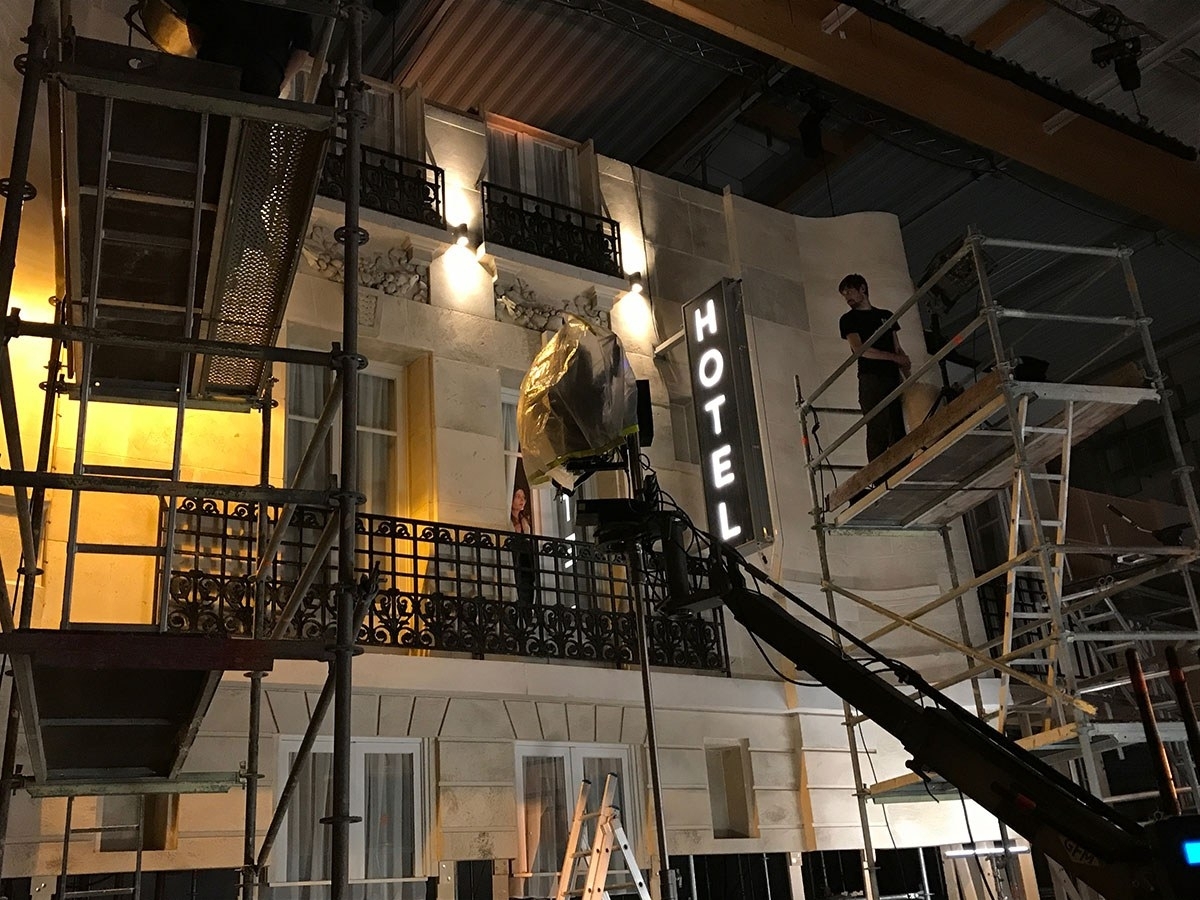
The cleverly constructed sets at Filmland Studios for Christophe Honoré’s "Chambre 212."
No VFX or CG set extensions were needed to create the idea of the buildings being across the street from one another, even when the action moved into the street for real. Chevrin shot the entire production in-camera, with precise framing and matched light to create the necessary effect.
“Essentially, the film is a fantasy trip into Maria’s mind and her imagination, and we wanted it to be warm and inviting,” says Chevrin. “In the rooms adjoining Room 212, Maria variously meets her mother, her grandmother and even her husband as a younger man, during different periods of time – such as the 1950s, ‘60s, ‘70s and ‘90s – as the film slowly depicts the couple’s life together, their happy times and terrible moments, what they achieved, and what they might have done to avert the current outcome.
“Creating the color, textures and lighting of each room involved a lot of close collaboration, and a lot of fun, with Stéphane Taillasson, the production designer, Olivier Bériot the costume designer, as well as the hair and make-up teams.”
Chevrin says the screwball comedies of American film director Leo McCarey, the romantic escapades in Sacha Guitry films, and the later films of Alain Resnais, which explore the relationship between consciousness, memory, and the imagination, were all important references in the visual storytelling of Chambre 212. Ed Lachman ASC’s warm and inviting lighting on the interior studio shots in Carol (2015) were an inspiration, too. Chevrin and Honoré also considered a number of experimental movies, such as the universes of David Lynch and Alain Renais, to explore the use of top shots that would reveal the different rooms to be boxes within the set.
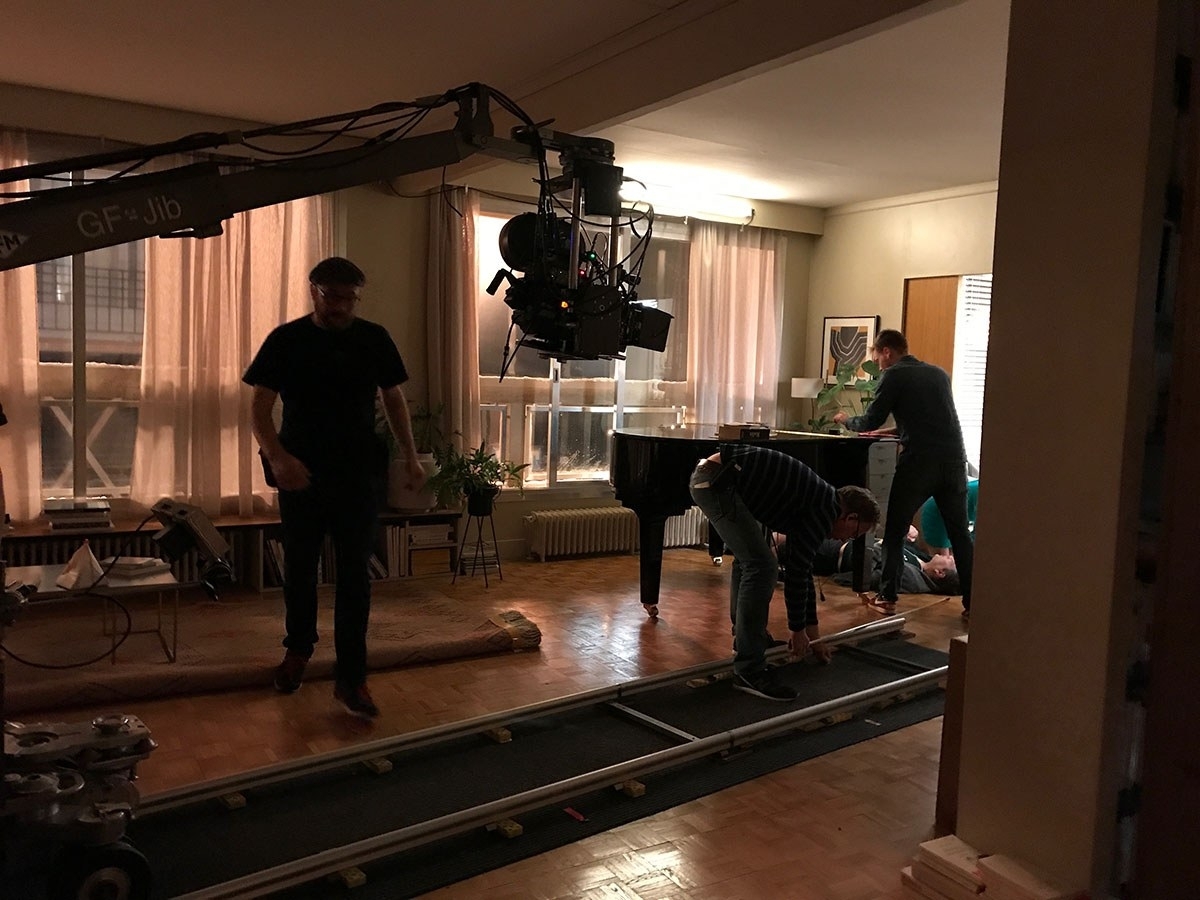
The cleverly constructed sets at Filmland Studios for Christophe Honoré’s "Chambre 212."
Chevrin operated the camera during production, assisted by Olivier Servais on focus, clapper/loader Martin Rossini, key grip Jean Francois Roqueplo, and gaffer Kevin Dresse. He framed the action in 1.85:1 aspect ratio, mainly though Leica Summilux prime lenses, using an ARRICAM Studio camera mounted on a dolly or small crane arms. An X-Fly 1D cable system, provided by XD Motion and operated by Benoît Denan, was used to move a digital camera fitted with Summilux Primes above the sets for the top shots. TSF in Paris provided the main camera, lens, grip and lighting equipment to the production.
With 95% of production taking place in nighttime scenes, Chevrin used KODAK VISION3 500T Color Negative Film 5219 for the mainstay of the production, with KODAK VISION3 250D Color Negative Film 5207 for the small number of day exteriors. Standard film negative processing and 2K scanning was completed at Studio L’Equipe in Brussels.
“Kodak 500T is wonderful to use in low-light conditions and, in combination with the Summilux lenses, it looks especially nice on faces and the rendition of skin tones,” he says. “It also gives a wonderful sensation of texture through the organic movement in the grain. The 500T contains so much information, in the highlight and dark areas of the image, which is wonderful when you come to finesse the picture in the final grade.” The finishing grade was conducted by colorist Marjolaine Mispelaere at Mikros Technicolor in Paris.
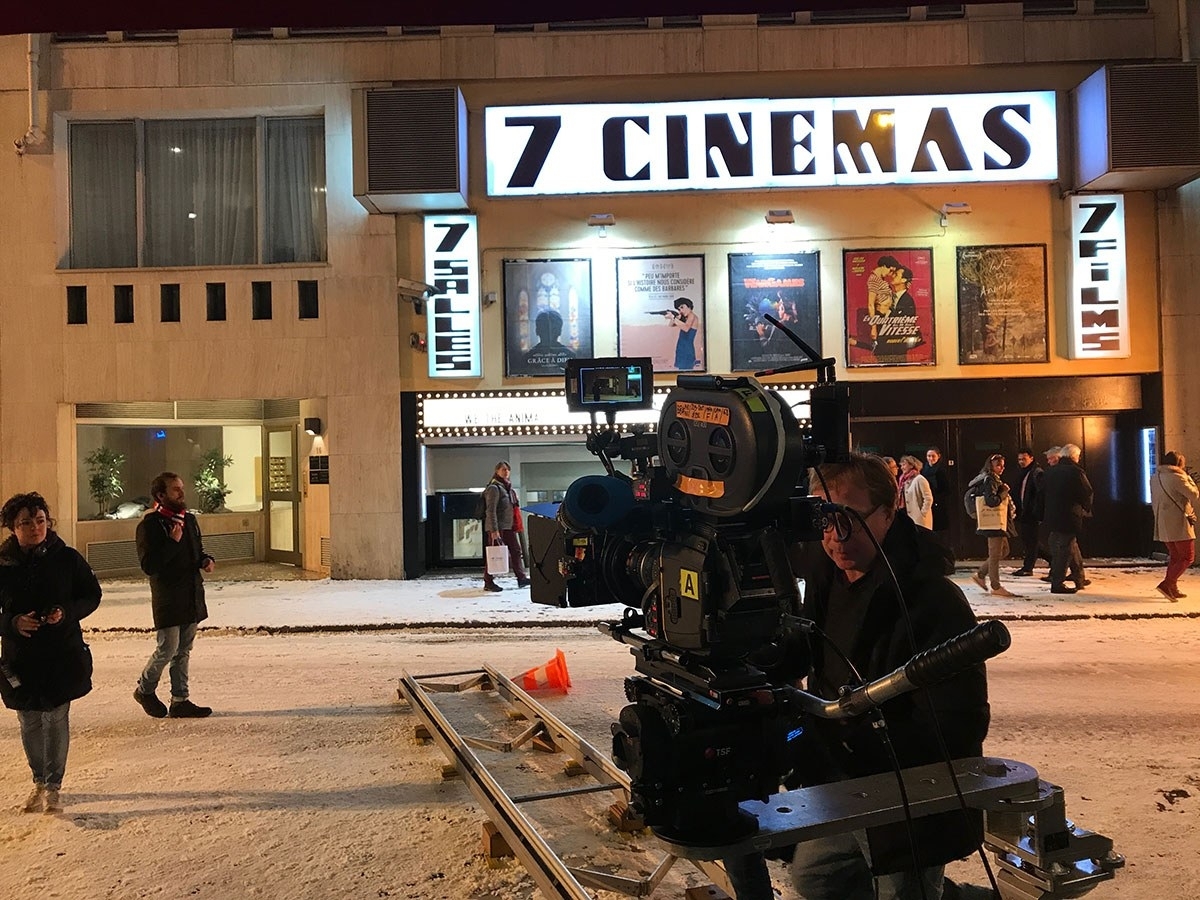
The cleverly constructed sets at Filmland Studios for Christophe Honoré’s "Chambre 212."
Chevrin shot the 500T with slight diffusion from a 1/8 Classic soft filter and created warmth and color in the image, including the orange sodium vapor of the street lighting, through a variety of tuneable LED lighting systems – 2K, 5K and 10K Fresnels, ARRI Sky Panels, Aladdins and Ruby lights – and sometimes with 422 half CT Straw gels on the lights.
To create the feeling of slight fog in the street, when looking out from the hotel room he affixed, gels on to the windows, typically an 1/8 or a 1/16 Hampshire Frost. In the street and outside the rooms, he deployed a fog machine and filtered the camera with a Low Fog half.
“The artistic value that celluloid capture brings to filmmaking is immeasurable,” he says. “Chambre 212 is a movie about love, and the best caress we could have ever given it was with the loving touch of film.”